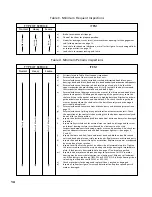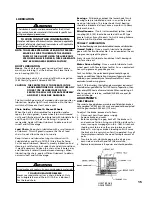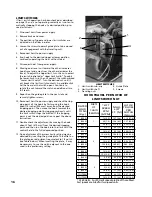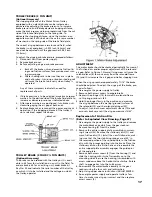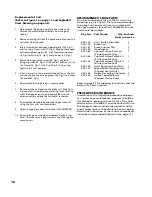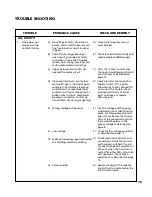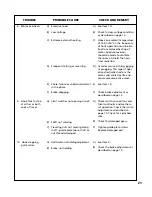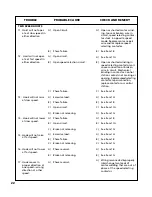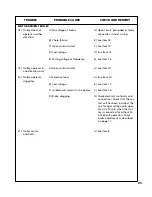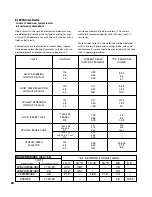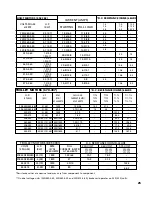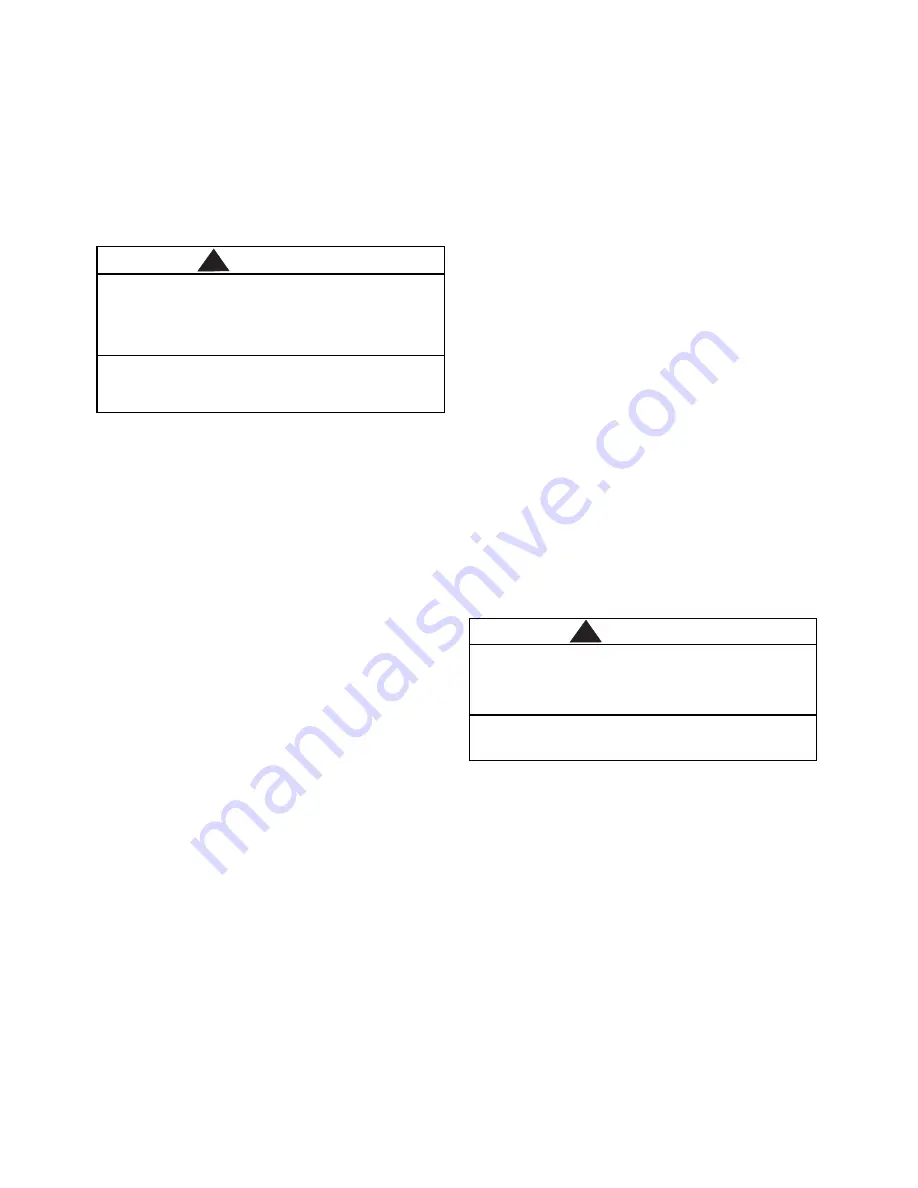
10
3. Move the manual disconnect switch handle to the
“ON” position.
4. Depress the
(up) control. If the hook moves in the
up direction, the hoist is ready for operation. If the
hook lowers, move the disconnect switch handle to
the “OFF” position and interchange the BLACK and
RED leads at the disconnect switch. Move the discon-
nect switch handle to the “ON” position and the
hoist is now ready for operation.
NOTE:
DO NOT CHANGE INTERNAL WIRING OF
HOIST OR CONTROL STATION TO REVERSE
HOOK DIRECTION. THE HOIST AND CONTROL
STATION WIRING WAS INSPECTED AND TEST-
ED FOR PROPER OPERATION AT THE FACTORY.
CHANGING THIS WIRING WILL CAUSE IMPROP-
ER OPERATION AND SERIOUS DAMAGE.
Also, do not force the Protector to compensate for improperly
adjusted limit switches or reverse voltage phasing.
CHECKING FOR TWIST IN LOAD CHAIN
3, 4 And 5 Ton Double Reeved Units
The best way to check for this condition is to run the
lower hook, without a load, up to within about 2 feet
(0.6M) of hoist. If the dead end of chain has been proper-
ly installed, a twist can occur only if the lower hook block
has been capsized between the strands of chain. Reverse
capsize to remove twist.
5,6 And 7 1/2 Ton Triple Reeved Units
On these models, the load chain is dead ended on top of
the lower hook block. If chain has been properly installed,
the only way a twist can occur is if the lower hook block
has been capsized between the strands of chain. If this
has occurred, two strands of chain will be wrapped
around each other and to remove twist, reverse the cap-
size.
CHECKING FOR ADEQUATE VOLTAGE AT HOIST
The hoist must be supplied with adequate electrical
power for proper operation and to reduce problems that
may result from insufficient power (low voltage). These
include:
• Noisy hoist operation due to brake and/or contactor
chatter.
• Heating of the hoist motor and other internal
components as well as heating of wires and con-
nectors in the circuit feeding the hoist.
• Failure of the hoist to lift the load due to motor
stalling.
• Blowing fuses or tripping circuit breakers.
For proper operation and to avoid these low voltage
problems, voltage (measured at the end of the 2.5 foot
(.9 M) power cord while lifting rated load) should be as
follows:
WARNING
Allowing the hook block to run into the bottom of
the hoist when raising a load or allowing the chain to
become taut between the loose end screw and the
frame when lowering a load may break the chain and
allow the load to drop.
TO AVOID INJURY:
Do not allow the hook block to contact the bottom of
the hoist or the loose end chain to become taut.
!
NOMINAL
MINIMUM
* MIN. VOLTAGE
POWER
OPERATING
AT INSTANT
SUPPLY
VOLTAGE
OF START
208-3-60
187
172
220-3-50
198
182
230-3-60
207
190
380-3-50
365
336
415-3-50
399
367
460-3-60
414
380
* The drop in voltage upon energizing the hoist should
not be below the value listed.
Remember, operation with low voltage can void the
Repair/Replacement policy. When in doubt about any of
the electrical requirements for the power supply system,
consult a qualified electrician.
CHECKING LIMIT SWITCH OPERATION
1. Press the
(Up) control and raise the lower hook
until the top of the hook block is about one foot
(0.3M) below hoist.
2. Cautiously continue raising the hook until upper
limit switch stops upward motion. At this point, the
top of the hook block should be 3 inches (76 mm)
below bottom of the hoist.
3. If adjustment is necessary, see page 16.
4. Press
(Down) control and cautiously lower hook until
lower limit switch stops the downward motion. From
10 to 12 chain links should be between the loose end
link and the opening for the chain in bottom of hoist.
If adjustment is necessary, see page 16.
CHAIN CONTAINER
If a chain container is to be used, attach it to the hoist
frame and place chain in container per instructions provid-
ed with the chain container kit. After the chain container
is installed, follow the instructions on page 16 to reset
upper limit switch so uppermost point of hook travel is
just below the bottom of the chain container.
UNDER NO CIRCUMSTANCES SHOULD THE HOOK
BLOCK OR LOAD BE PERMITTED TO COME IN CON-
TACT WITH THE CHAIN CONTAINER. IF CONTACT IS
MADE, THE FUNCTION OF THE CHAIN CONTAINER CAN
BE INTERFERED WITH, THE CONTAINER MAY BE DAM-
AGED AND IT COULD FALL OFF OF THE HOIST.
CONTROL CORD
Unless ordered on a special basis, the hoist is supplied
with a control cord that will position the control station
approximately 4 feet (1.2M) above the lower hook when
it is at the lower limit of lift. If this places the control sta-
tion too close to the floor, a “control cord alteration kit”
(Key No. 627-474, Part Number 28642) can be obtained
from factory for shortening the length of the control
cord.
WARNING
Allowing the hook block to run into the bottom of
hoist when raising a load or allowing the chain to
become taut between the loose end screw and the
frame when lowering a load may break the chain and
allow the load to drop.
TO AVOID INJURY:
Do not allow the hook block to contact the bottom of
hoist or the loose end chain to become taut.
!


















